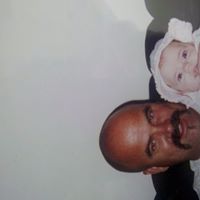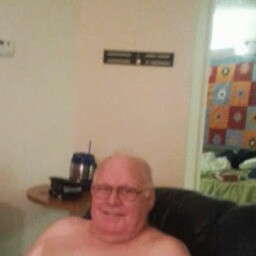Robert G Matheny
age ~69
from Carmel, IN
- Also known as:
-
- Robert G Mattheny
Robert Matheny Phones & Addresses
- Carmel, IN
- Atlanta, GA
- Norcross, GA
- Enid, OK
- Temple, TX
- Indianapolis, IN
- Houston, TX
- Columbus, OH
- 4370 River Bottom Dr, Norcross, GA 30092 • (678)6418243
Work
-
Company:SAINT JOSEPH DOCTOR CENTER 3
-
Address:5671 Peachtree Dunwoody Rd Ne Suite 550, Atlanta, GA 30342
-
Phones:(404)8511250 (678)3416911
Education
-
School / High School:University of Texas At Houston / Medical School At Houston1982
Languages
English
Awards
Healthgrades Honor Roll
Ranks
-
Certificate:General Surgery, 1990
Specialities
Cardiac Surgery
Medicine Doctors

Dr. Robert G Matheny, Atlanta GA - MD (Doctor of Medicine)
view sourceSpecialties:
Cardiac Surgery
Address:
SAINT JOSEPH DOCTOR CENTER 3
5671 Peachtree Dunwoody Rd Ne Suite 550, Atlanta, GA 30342
(404)8511250 (Phone), (678)3416911 (Fax)
5671 Peachtree Dunwoody Rd Ne Suite 550, Atlanta, GA 30342
(404)8511250 (Phone), (678)3416911 (Fax)
Certifications:
General Surgery, 1990
Thoracic Cardiovascular Surgery, 2002
Thoracic Cardiovascular Surgery, 2002
Awards:
Healthgrades Honor Roll
Languages:
English
Hospitals:
SAINT JOSEPH DOCTOR CENTER 3
5671 Peachtree Dunwoody Rd Ne Suite 550, Atlanta, GA 30342
Saint Joseph's Hospital of Atlanta
5665 Peachtree Dunwoody Road North East, Atlanta, GA 30342
5671 Peachtree Dunwoody Rd Ne Suite 550, Atlanta, GA 30342
Saint Joseph's Hospital of Atlanta
5665 Peachtree Dunwoody Road North East, Atlanta, GA 30342
Education:
Medical School
University of Texas At Houston / Medical School At Houston
Graduated: 1982
Medical School
St Lukes Episcopal Hospital
Graduated: 1982
Medical School
Scott-White/Tex A&M
Graduated: 1982
Medical School
Ohio St U
Graduated: 1982
University of Texas At Houston / Medical School At Houston
Graduated: 1982
Medical School
St Lukes Episcopal Hospital
Graduated: 1982
Medical School
Scott-White/Tex A&M
Graduated: 1982
Medical School
Ohio St U
Graduated: 1982

Robert G. Matheny
view sourceSpecialties:
Pulmonary Critical Care Medicine, Pulmonary Disease
Work:
Kingman Pulmonary Associates
1739 E Beverly Ave STE 203, Kingman, AZ 86409
(928)7573133 (phone), (928)7573136 (fax)
1739 E Beverly Ave STE 203, Kingman, AZ 86409
(928)7573133 (phone), (928)7573136 (fax)
Education:
Medical School
St. George's University School of Medicine, St. George's, Greneda
Graduated: 1998
St. George's University School of Medicine, St. George's, Greneda
Graduated: 1998
Procedures:
Lung Biopsy
Pulmonary Function Tests
Pulmonary Function Tests
Conditions:
Acute Bronchitis
Acute Upper Respiratory Tract Infections
Bacterial Pneumonia
Bronchial Asthma
Chronic Bronchitis
Acute Upper Respiratory Tract Infections
Bacterial Pneumonia
Bronchial Asthma
Chronic Bronchitis
Languages:
English
Spanish
Vietnamese
Spanish
Vietnamese
Description:
Dr. Matheny graduated from the St. George's University School of Medicine, St. George's, Greneda in 1998. He works in Kingman, AZ and specializes in Pulmonary Critical Care Medicine and Pulmonary Disease. Dr. Matheny is affiliated with Kingman Regional Medical Center.

Robert G Matheny
view sourceSpecialties:
Thoracic Surgery
Cardiothoracic Vascular Surgery
Adult Medicine
Cardiothoracic Vascular Surgery
Adult Medicine
Education:
The University of Texas at Houston (1982)

Robert G Matheny, Atlanta GA
view sourceSpecialties:
Cardiothoracic Surgeon
Address:
5671 Peachtree Dunwoody Rd Ne, Atlanta, GA 30342
Education:
University of Texas (Houston), Medical School - Doctor of Medicine
Ohio State University Medical Center, The - Fellowship - Cardiothoracic Surgery
Scott & White Memorial Hospital - Residency - Surgery
Ohio State University Medical Center, The - Fellowship - Cardiothoracic Surgery
Scott & White Memorial Hospital - Residency - Surgery
Name / Title
Company / Classification
Phones & Addresses
Executive Vice President
McGinnis and Associates, Inc.
Secretarial and Court Reporting Services
Secretarial and Court Reporting Services
5701 N High St Ste 300, Columbus, OH 43085
CSO
CORMATRIX CARDIOVASCULAR, INC
1100 Old Ellis Rd, Roswell, GA 30076
4370 Riv Btm Dr, Norcross, GA 30092
4370 Riv Btm Dr, Norcross, GA 30092
Medical Doctor
Robert Robison
Medical Doctor's Office
Medical Doctor's Office
8433 Harcourt Rd, Indianapolis, IN 46260
Cardiac Surgery (Thoracic Sgy)
Center for Vascular Health at St Vincent
Medical Doctor's Office
Medical Doctor's Office
8433 Harcourt Rd, Indianapolis, IN 46260
(317)5837600
(317)5837600
Robert Matheny MD
Thoracic Surgery
Thoracic Surgery
5671 Peachtree Dunwoody Rd NE, Atlanta, GA 30342
(404)2529063
(404)2529063
Chairman, Chairman, Director
Cooperative Response Center, Inc
Business Services
Business Services
(507)4372400
Us Patents
-
Vacuum-Assisted Securing Apparatus For A Microwave Ablation Instrument
view source -
US Patent:6364876, Apr 2, 2002
-
Filed:Sep 20, 1999
-
Appl. No.:09/398723
-
Inventors:Lyndall Erb - Montaro CA
Dany Berube - Fremont CA
Robert Matheny - Carmel IN
Robert E. Woodard - Hayward CA
Theodore C. Ormsby - Hayward CA -
Assignee:AFx, Inc. - Fremont CA
-
International Classification:A61B 1818
-
US Classification:606 33, 606 41, 607101, 607156, 600387
-
Abstract:A securing apparatus for selectively securing an ablating element of an ablation instrument proximate to a targeted region of a biological tissue. The securing apparatus includes a support base affixed to the ablation instrument relative the ablating element, and having a support face adapted to seat against the biological tissue proximate to the ablation element. The support base further defines a passage having one end communicably coupled to a vacuum source and an opposite end terminating at an orifice at the support face. The support face together with the biological tissue forms a hermetic seal thereagainst during operation of the vacuum source to secure the ablation instrument thereagainst. Essentially, the hermetic seal and the vacuum source cooperate to form a vacuum force sufficient to retain the ablation device against the biological tissue.
-
Method And Apparatus For Using Vagus Nerve Stimulation In Surgery
view source -
US Patent:6381499, Apr 30, 2002
-
Filed:May 17, 2000
-
Appl. No.:09/574586
-
Inventors:Charles S. Taylor - San Francisco CA
Robert G. Matheny - Carmel IN
Dwight P. Morejohn - Davis CA -
Assignee:Cardiothoracic Systems, Inc. - Cupertino CA
-
International Classification:A61N 132
-
US Classification:607118, 607 9
-
Abstract:A method and apparatus for facilitating coronary surgery on the beating heart wherein the vagus nerve is electrically stimulated to purposely temporarily stop or substantially reduce the beating of the heart under precisely controlled conditions. The apparatus controllably applies electrical stimulus to pre-selected locations along the vagus nerve and to pre-selected nerve branches related to the heart. The apparatus includes several clip and probe configurations for establishing electrical contact with the vagus nerve. Such purposely caused temporary stoppage or substantial reduction of the beating of the heart facilitates procedures such as suturing of an anastomosis which would otherwise be more difficult because of the motion induced by the beating heart.
-
Access Platform For Internal Mammary Dissection
view source -
US Patent:6602189, Aug 5, 2003
-
Filed:Jan 10, 2000
-
Appl. No.:09/480830
-
Inventors:Federico J. Bennetti - Santa Fe, AR
Charles S. Taylor - San Francisco CA
William N. Aldrich - Redwood City CA
Ivan Sepetka - Los Altos CA
Robert G. Matheny - Carmel IN
Eugene E. Reis - San Jose CA
Brent Regan - Davis CA
Richard M. Ferrari - Saratoga CA -
Assignee:Cardiothoracic Systems, Inc. - Santa Clara CA
-
International Classification:A61B 1728
-
US Classification:600232, 606207
-
Abstract:An access platform having a first and a second blade interconnected to a spreader member that laterally drives the blades apart or together and a sternal pad interconnected to a blade. The superior blade is preferably pivotally coupled to the spreader member such that it naturally rises as the blades are separated. Alternatively, a vertical displacement member is operably interconnected to a blade and the spreader member and is used to vertically displace the interconnected superior blade and, thus, increase a surgeons working space and visual access for the dissection of an internal mammary artery. A tissue retractor is interconnected to the blades to draw the soft tissue around an incision away from the surgeons working area.
-
Left And Right Side Heart Support
view source -
US Patent:6926662, Aug 9, 2005
-
Filed:Dec 23, 1999
-
Appl. No.:09/868973
-
Inventors:Walid N. Aboul-Hosn - Fair Oaks CA, US
William R. Kanz - Sacramento CA, US
Jodi Akin - Alamo CA, US
Michael Guidera - Carmichael CA, US
Robert G. Matheny - Carmel IN, US -
Assignee:A-Med Systems, Inc. - W. Sacramento CA
-
International Classification:A61M001/10
-
US Classification:600 16, 623 31
-
Abstract:A cannulation system for cardiac support uses an inner cannula disposed within an outer cannula. The outer cannula includes a fluid inlet for placement within the right atrium of a heart. The inner cannula includes a fluid inlet extending through the fluid inlet of the outer cannula and the atrial septum for placement within at least one of the left atrium and left ventricle of the heart. The cannulation system also employs a pumping assembly coupled to the inner and outer cannulas to withdraw blood from the right atrium for delivery to the pulmonary artery to provide right heart support, or to withdraw blood from at least one of the left atrium and left ventricle for delivery into the aorta to provide left heart support, or both.
-
Vacuum-Assisted Securing Apparatus For A Microwave Ablation Instrument
view source -
US Patent:7052491, May 30, 2006
-
Filed:Apr 1, 2002
-
Appl. No.:10/115115
-
Inventors:Lyndall Erb - Montaro CA, US
Dany Berube - Fremont CA, US
Robert Matheny - Carmel IN, US
Robert E. Woodard - Hayward CA, US
Theodore C. Ormsby - Hayward CA, US -
Assignee:AFX, Inc. - Santa Clara CA
-
International Classification:A61B 18/18
-
US Classification:606 17, 606 14
-
Abstract:A securing apparatus for selectively securing an ablating element of an ablation instrument proximate to a targeted region of a biological tissue. The securing apparatus includes a support base affixed to the ablation instrument relative the ablating element, and having a support face adapted to seat against the biological tissue proximate to the ablation element. The support base further defines a passage having one end communicably coupled to a vacuum source and an opposite end terminating at an orifice at the support face. The support face together with the biological tissue forms a hermetic seal thereagainst during operation of the vacuum source to secure the ablation instrument thereagainst. Essentially, the hermetic seal and the vacuum source cooperate to form a vacuum force sufficient to retain the ablation device against the biological tissue.
-
Vacuum-Assisted Securing Apparatus For A Microwave Ablation Instrument
view source -
US Patent:7387627, Jun 17, 2008
-
Filed:Sep 14, 2005
-
Appl. No.:11/227003
-
Inventors:Lyndall Erb - Montaro CA, US
Dany Berube - Fremont CA, US
Robert Matheny - Carmel IN, US
Robert E. Woodard - Hayward CA, US
Theodore C. Ormsby - Hayward CA, US -
Assignee:Maquet Cardiovascular LLC - San Jose CA
-
International Classification:A61B 18/18
-
US Classification:606 33, 128898, 606 41
-
Abstract:A securing apparatus for selectively securing an ablating element of an ablation instrument proximate to a targeted region of a biological tissue. The securing apparatus includes a support base affixed to the ablation instrument relative the ablating element, and having a support face adapted to seat against the biological tissue proximate to the ablation element. The support base further defines a passage having one end communicably coupled to a vacuum source and an opposite end terminating at an orifice at the support face. The support face together with the biological tissue forms a hermetic seal thereagainst during operation of the vacuum source to secure the ablation instrument thereagainst. Essentially, the hermetic seal and the vacuum source cooperate to form a vacuum force sufficient to retain the ablation device against the biological tissue.
-
Left And Right Side Heart Support
view source -
US Patent:7785246, Aug 31, 2010
-
Filed:Dec 21, 2004
-
Appl. No.:11/018872
-
Inventors:Walid N. Aboul-Hosn - Fair Oaks CA, US
William R. Kanz - Sacramento CA, US
Jodi Akin - Alamo CA, US
Michael Guidera - Carmichael CA, US
Robert G. Matheny - Carmel IN, US -
Assignee:MAQUET Cardiovascular LLC - San Jose CA
-
International Classification:A61M 25/00
-
US Classification:600 16, 623 31
-
Abstract:A cannulation system for cardiac support uses an inner cannula disposed within an outer cannula. The outer cannula includes a fluid inlet for placement within the right atrium of a heart. The inner cannula includes a fluid inlet extending through the fluid inlet of the outer cannula and the atrial septum for placement within at least one of the left atrium and left ventricle of the heart. The cannulation system also employs a pumping assembly coupled to the inner and outer cannulas to withdraw blood from the right atrium for delivery to the pulmonary artery to provide right heart support, or to withdraw blood from at least one of the left atrium and left ventricle for delivery into the aorta to provide left heart support, or both.
-
Prosthetic Tissue Valve
view source -
US Patent:8257434, Sep 4, 2012
-
Filed:Sep 3, 2010
-
Appl. No.:12/875727
-
Inventors:Robert G. Matheny - Norcross GA, US
-
Assignee:CorMatrix Cardiovascular, Inc. - Alpharetta GA
-
International Classification:A61F 2/24
-
US Classification:623 219, 623 212, 623 213, 623 217
-
Abstract:A prosthetic tissue valve for aortic, pulmonary, mitral or tricuspid valve replacement is described herein. A sewing ring for use with the prosthetic tissue valve is also described. The valve can have a circumference that is a predetermined distance larger than the circumference of an annulus in a defective valve. The valve can be substantially planar in an unstressed position before attachment at the annulus and substantially non-planar upon attachment in a biased position at the annulus. Methods are provided for placing the valve as described herein in the biased position within the annulus of the defective valve.
Resumes

Supervisor At National White Collar Crime Center
view sourcePosition:
Supervisor at National White Collar Crime Center
Location:
Fairmont, West Virginia
Industry:
Law Enforcement
Work:
National White Collar Crime Center since Mar 2012
Supervisor
Wheeling WV Police Department Oct 2009 - Mar 2012
Chief of Police
Clarksburg WV Police Department Jul 1989 - Oct 2009
Police Lieutenant (Retired)
Supervisor
Wheeling WV Police Department Oct 2009 - Mar 2012
Chief of Police
Clarksburg WV Police Department Jul 1989 - Oct 2009
Police Lieutenant (Retired)
Education:
University of Virginia 2008 - 2008
FBI National Academy, Law Enforcement Management Marshall University 1987 - 1987
WV State Police Academy, Law Enforcement Certification
FBI National Academy, Law Enforcement Management Marshall University 1987 - 1987
WV State Police Academy, Law Enforcement Certification

Physician At Krmc
view sourcePosition:
Physician at Physician
Location:
Kingman, Arizona
Industry:
Medical Practice
Work:
Physician since Jul 2004
Physician
Physician
Education:
Arizona State University, Saint George's University School of Medicine (Grenada),

Head, Primary Care Excellence;Sales 3.0 At Novartis
view sourcePosition:
Head, Primary Care Excellence;Sales 3.0 at Novartis
Location:
Basel Area, Switzerland
Industry:
Pharmaceuticals
Work:
Novartis - Basel, Switzerland since Jan 2013
Head, Primary Care Excellence;Sales 3.0
Novartis - North East Region Apr 2011 - Jan 2013
Senior Area Business Leader - PCBU
Novartis - Boston Region Aug 2011 - Apr 2012
Managing Director (ai)
Novartis Jan 2011 - Feb 2012
Global Leadership Discovery Program
Novartis Jun 2004 - Sep 2011
District Sales Manager
Head, Primary Care Excellence;Sales 3.0
Novartis - North East Region Apr 2011 - Jan 2013
Senior Area Business Leader - PCBU
Novartis - Boston Region Aug 2011 - Apr 2012
Managing Director (ai)
Novartis Jan 2011 - Feb 2012
Global Leadership Discovery Program
Novartis Jun 2004 - Sep 2011
District Sales Manager
Education:
University of Massachusetts Dartmouth
BA, Economics
BA, Economics
Skills:
Team Leadership
Change Leadership
Strategic Leadership
Coaching
Managed Care
Sales Management
Project Planning
Sales Process
Training & Development
Academic Medical Centers
Compliance
Delivering Results
Endocrinology
Urology
Cardiology
Neurology
Marketing Research
Infusion
P&L responsibility
Change Leadership
Strategic Leadership
Coaching
Managed Care
Sales Management
Project Planning
Sales Process
Training & Development
Academic Medical Centers
Compliance
Delivering Results
Endocrinology
Urology
Cardiology
Neurology
Marketing Research
Infusion
P&L responsibility
Interests:
Golf, Skiing, Ocean, Patriot Football & The Red Sox
Honor & Awards:
Novartis National Sales Awards:
2010 District Manager Of The Year Award
2009 District Manager Of The Year Award
2008 Impact Award For Leadership
2008 Customer Driven Model Customer Win Award
2008 Customer Innovation Award
2006 Impact Award For Leadership
2005 Impact Award For Leadership

Robert Matheny
view sourceLocation:
United States
Youtube
Myspace
Plaxo

Robert Matheny
view sourceWarrenville
Flickr

Robert Matheny
view source
Robert Matheny
view source
Robert W. Matheny Sr.
view source
Robert Matheny
view source
Robert Matheny
view source
Robert Matheny
view source
Robert Joseph Matheny
view source
Mark Robert Matheny
view sourceGoogleplus

Robert Matheny
Work:
Onpoint Health Data - DBA/System Administrator
Education:
Grantham University - Bachelor in Engineering Management
Relationship:
Married

Robert Matheny
Education:
Mount Hood Community College - Radio Broadcasting

Robert Matheny

Robert Matheny

Robert Matheny

Robert Matheny

Robert Matheny

Robert Matheny
Classmates

Robert Allen (Matheny)
view sourceSchools:
Murray City Elementary School Murray City OH 1951-1960
Community:
Christi Newman, Carol Driggs, Mary Roberts, Amie Smith

Robert Robert E. Matheny ...
view sourceSchools:
Herbert Hoover High School Falling Rock WV 1976-1977
Community:
Samantha Stricklen

Robert Matheny
view sourceSchools:
Gore Middle School Clarksburg WV 1963-1966
Community:
Janis Beezel, Shirley Sites, John Brown

Robert Matheny
view sourceSchools:
Strawberry High School Strawberry AR 1959-1963
Community:
Dawn Hightree, Diane Jordan, Anna Casady, Mira Trowbridge

Robert Matheny
view sourceSchools:
Baker High School Baker FL 1988-1992
Community:
Barbara Bozeman, Dan Watson

Robert Matheny
view sourceSchools:
Whitman Elementary School Portland OR 1985-1989, Our Lady of Sorrows School Portland OR 1990-1994
Community:
Mark Herceg, Angela White, Natalie Herceg, Robert Hauth, Lauren Clove, Tiffany Detweiler, Niki Harvey, Josh Culbertson, Amy Parscale, Marie Pierce, Nathan Gubele

Tulare Western High Schoo...
view sourceGraduates:
robert matheny (1972-1976),
Franci Alberti (1974-1978),
Cecelia Serna (1979-1983),
melanie aguilar (1989-1993)
Franci Alberti (1974-1978),
Cecelia Serna (1979-1983),
melanie aguilar (1989-1993)

Strawberry High School, S...
view sourceGraduates:
Julie Dancer (1983-1987),
Doris Matheny (1958-1962),
Carolyn Lantz (1967-1971),
Amanda Geurin (1995-1999),
Robert Matheny (1959-1963)
Doris Matheny (1958-1962),
Carolyn Lantz (1967-1971),
Amanda Geurin (1995-1999),
Robert Matheny (1959-1963)
Get Report for Robert G Matheny from Carmel, IN, age ~69


















